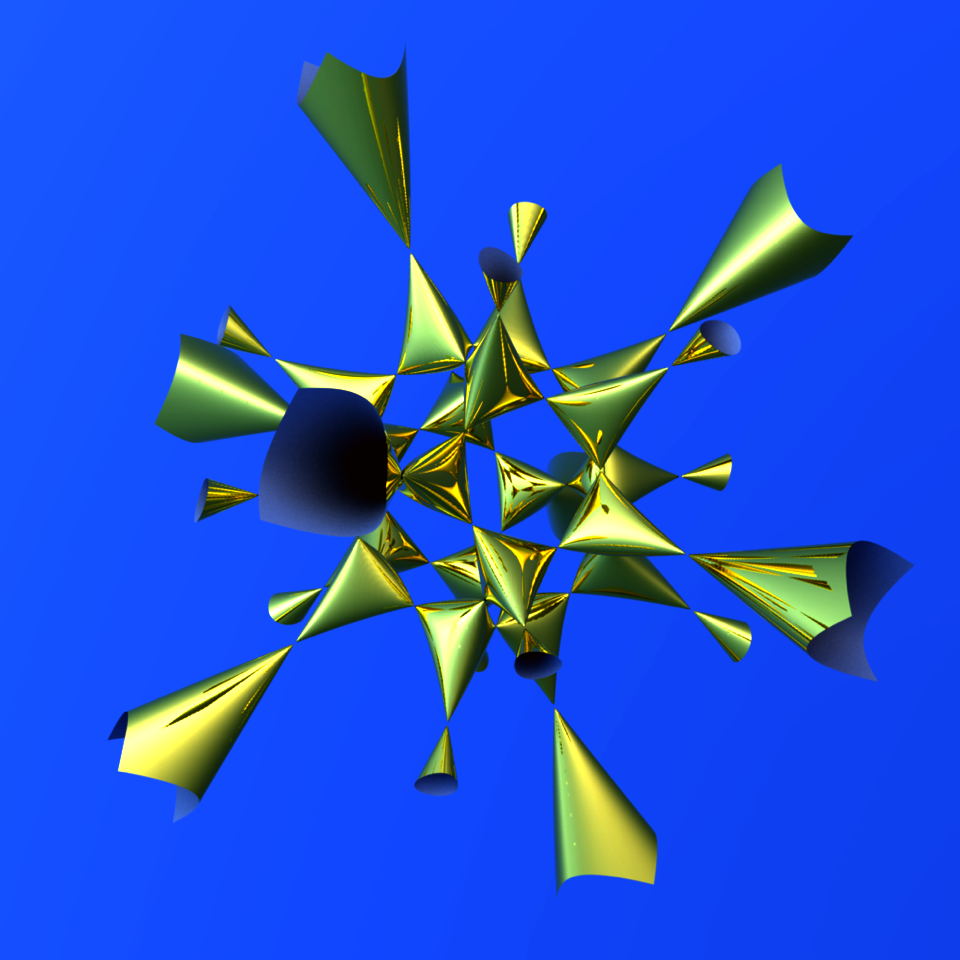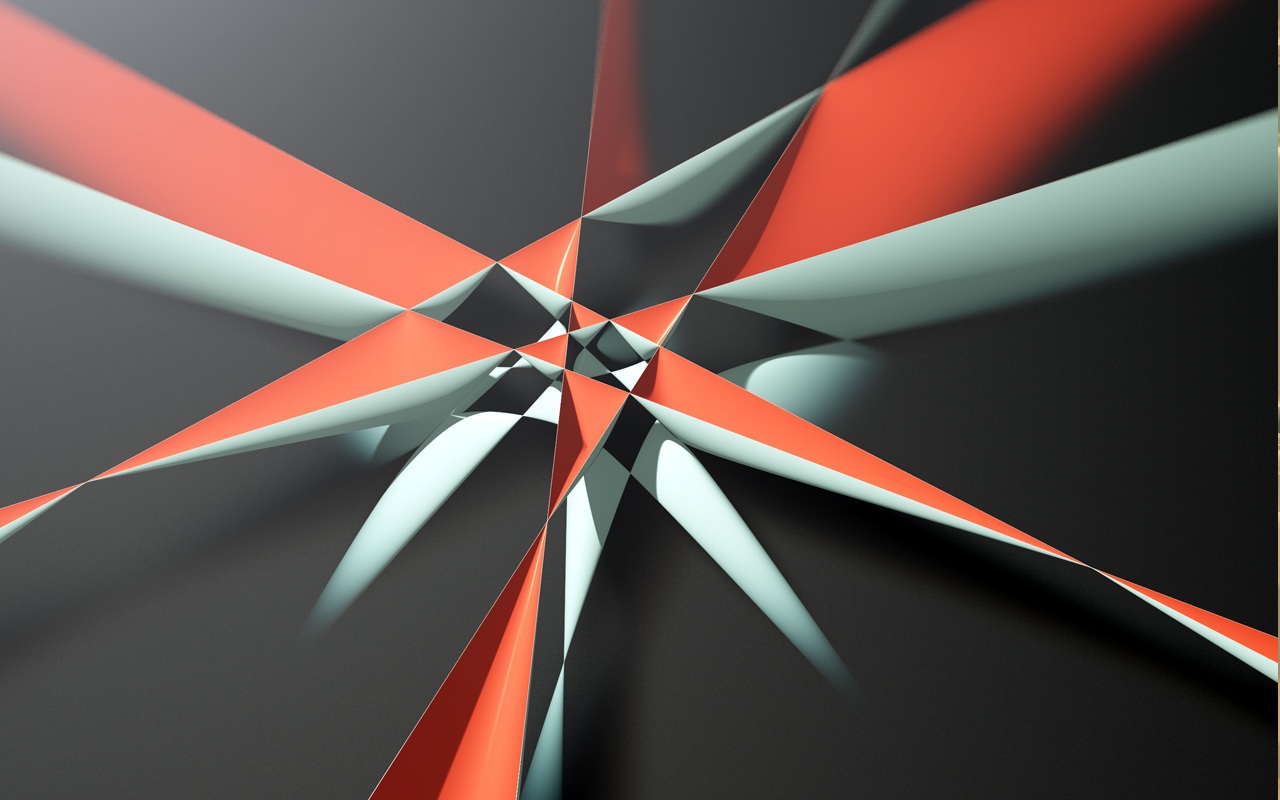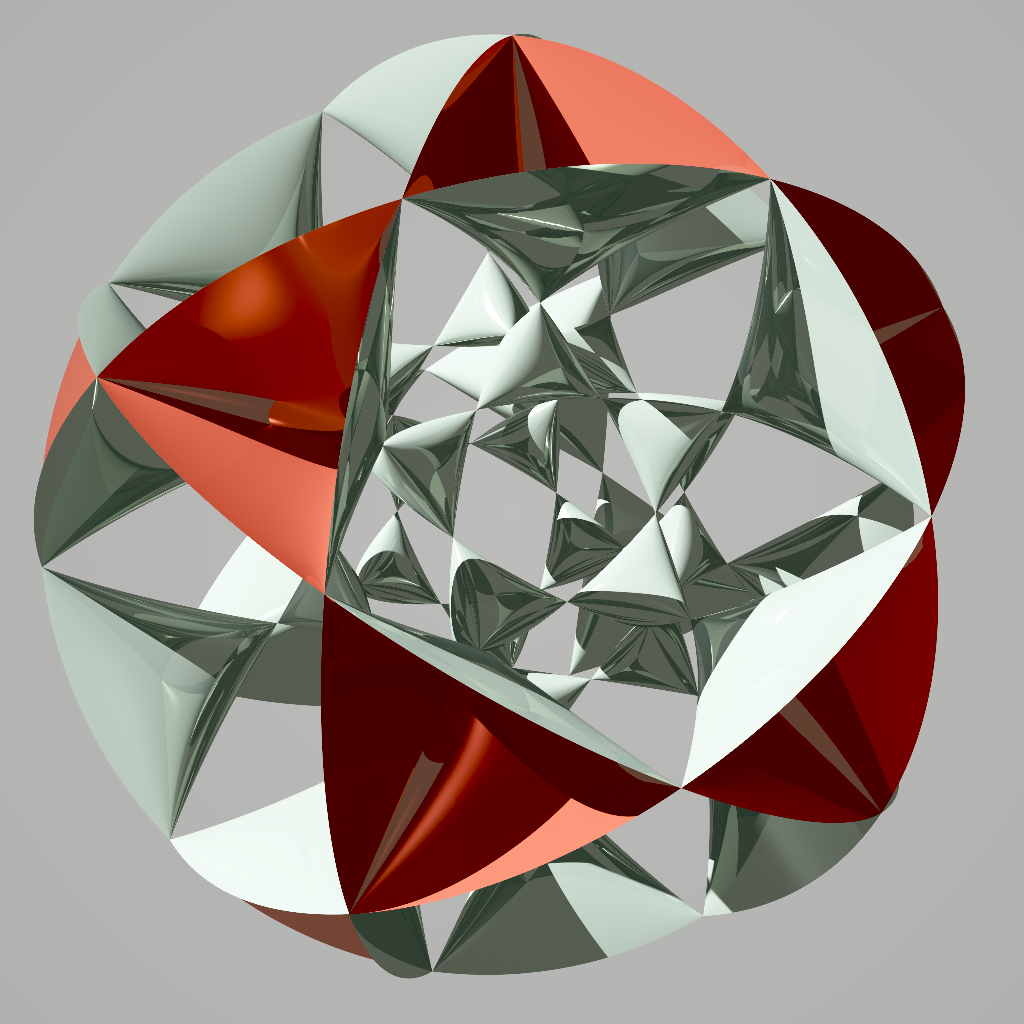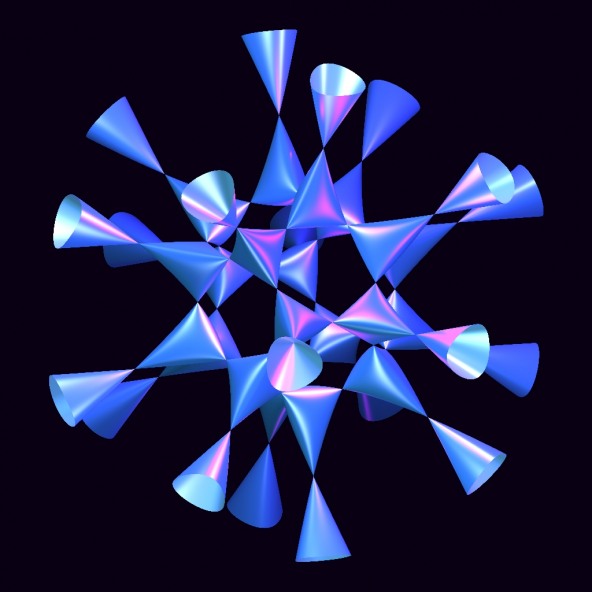A sextic surface is one defined by a polynomial equation of degree 6. The Barth sextic, drawn above by Craig Kaplan, is the sextic surface with the maximum possible number of ordinary double points: that is, points where it looks like the origin of the cone in 3-dimensional space defined by
x2+y2=z2.
In 1946, Francesco Severi claimed that 52 is the maximum number of ordinary double points possible for a sextic surface. This was refuted in 1994 when Wolf Barth discovered what is now called the Barth sextic, which has 65 double points:
• Wolf Barth, Two projective surfaces with many nodes, admitting the symmetries of the icosahedron, Journal of Algebraic Geometry 5 (1994), 173–186.
In 1997, David B. Jaffe and Daniel Ruberman proved that 65 is the maximum number of double points for a sextic surface that has no singularities other than nodes, which are a generalization of double points:
• David B. Jaffe, and Daniel Ruberman, A sextic surface cannot have 66 nodes, Journal of Algebraic Geometry 6 (1997), 151–168.
Not all sextics with 65 double points have icosahedral symmetry, but as Barth noted in the title of his paper, his does! 20 of the double points lie at the vertices of a regular dodcahedron, and 30 lie at the midpoints of the edges of another, concentric, regular dodecahedron. To see this more clearly, look at the beautiful animations here:
• Hermann Serras, Barth’s sextic surface and two associated regular dodecahedra.
That accounts for 50 of the 65 double points. Where are the other 15? They are hiding at ‘points at infinity’. To understand this, and to bring them into view, we need to dig a bit deeper into the geometry.
A sextic surface is defined by a homogeneous polynomial equation of degree 6. This equation determines a subset S⊂C4 with complex dimension 2. Note that if (x1,…,x4)∈C4 is a solution, so is any multiple (cx0,…,cx4). We may thus projectivize S, treating any solution as ‘the same’ as any multiple of that solution. The result is an algebraic variety X in the complex projective space CP3. This is a smooth manifold of complex dimension 2, so it is called a smooth surface. To obtain an ordinary real 2-dimensional surface we may take its intersection with a copy of RP3 in CP3.
Sitting inside RP3 we have ordinary 3-dimensional space, R3. But we also have ‘points at infinity’. If you march off in either of two opposite directions in R3, you will approach one of these points at infinity. The points at infinity form a projective plane, that is, a copy of RP2.
The Barth sextic is usually described by the sextic equation
4(Φ2x2−y2)(Φ2y2–z2)(Φ2z2−x2)–(1+2Φ)(x2+y2+z2−w2)2w2=0
where
Φ=√5+12
is the ‘large’ golden ratio.
With a standard choice of R3 inside RP3, 15 of the double points of this surface lie at infinity. You can reach them by taking either of the aforementioned dodecahedra, drawing lines between the midpoints of its 15 pairs of opposite edges, and following these lines to infinity!
We can bring these double points into view by rotating RP3 slightly. Then we get a view like this, drawn by Abdelaziz Nait Merzouk:
In this view, the Barth sextic has also been sliced by a plane, to make its inside visible.
Merzouk has also brought the double points at infinity into view using a transformation that compresses all of R3 down to the unit ball. Then these double points lie on the unit sphere:
However, we must count antipodal points on the sphere as the same point in RP2. So, the 30 double points you see on the unit sphere above give 15 points at infinity.
For other views, see:
• Abdelaziz Nait Merzouk, Barth sextic.
Jaffe and Ruberman actually proved that a sextic surface with only nodes as singularities cannot have more than 65 nodes. Their proof uses coding theory in an intriguing way. They show that an ‘even’ set of nodes (see their paper for the definition) gives rise to a binary linear code: that is, a linear subspace of Fn2, where n is the number of nodes. Their proof then uses a mixture of algebraic geometry and coding theory.
This is another picture of the Barth sextic, obtained here:
• Oliver Labs, Gallery of surfaces, Imaginary: Open Mathematics.
This picture was made available with a Creative Commons Attribution-NonCommercial-ShareAlike 3.0 Unported license.
Visual Insight is a place to share striking images that help explain advanced topics in mathematics. I’m always looking for truly beautiful images, so if you know about one, please drop a comment here and let me know!








I think I can see how the dodecahedron is involved. First, dehomogenize by setting w = 1. Then if you assume that x,y,z lie on the the unit sphere in R^3, the second term in the equation vanishes, and what you are left with is six lines. I think you’ll get a picture that looks like this:
http://myweb.tiscali.co.uk/oaktree/butterfly/backpages/pics/great-circles/icosa/XT_Icosa_F1_Sphere_PPT.jpg
I got this picture from this website:
http://myweb.tiscali.co.uk/oaktree/butterfly/backpages/icosa_great_circles.htm
With the free software SURFER you can visualize/manipulate the Barth Sextic in real time (zoom in/out, rotate it, change parameters, change the equation, etc.).
The program is available at:
http://imaginary.org/program/surfer
You will find the Barth Sextic in the “World record surfaces” gallery. There you will find other surfaces with maximum possible numbers of double points (also ones, which are not yet proven to be the “maximum” ones).
Cool!
I don’t see the “world record surfaces” gallery.
Dear John,
just click on the “Start” button and you will see three galleries (Tutorial, Fantasy and World Record Surfaces). There you will find the double point world record quadrics, cubics, quartics, sextics, septics, octics, etc.
Enjoy! And thanks for the great article!